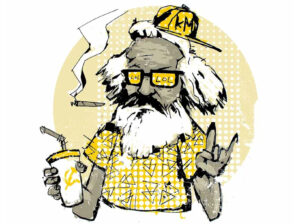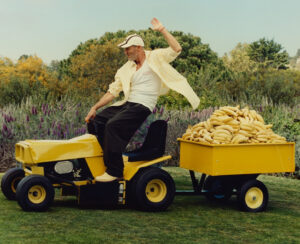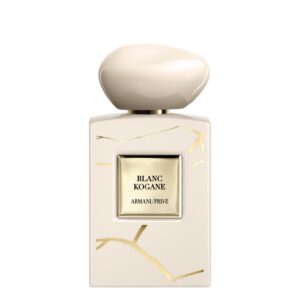
In a time when any form of certainty is equated with authoritarianism—where totalizing mindsets are seen as the slippery slope to fascism—any strong aesthetic judgment gets immediately cast as suspect. If taste is personal, and every voice is equal, then who is Hicks, or anyone else, to declare a work of art “good” or “bad”? Isn’t that just wearing shiny jackboots, metaphorically speaking?
To Hicks, this line of thinking mistakes taste for tyranny. He’s not claiming objective truths about art. He’s simply acknowledging that, like any artist who’s dedicated decades to a craft, his tastes have sharpened, narrowed, evolved. He’s doing what humans have always done as they age: remembering a time when standards seemed higher, when sincerity wasn’t such a dirty word.
There’s an arrogance, after all, in pretending that anyone can view art from nowhere—that an individual could somehow transcend bias, upbringing, knowledge, and emotional response to deliver an unfiltered, universal judgment. The idea that everything in art is totally subjective is, historically speaking, a relatively new phenomenon, rising to dominance with postmodernism, critical theory, and the death-of-the-author movement from the 1970s onward. It certainly shook up the old order and opened up thrilling new modes of creativity—collage, sampling, remix culture, the beautiful chaos of punk and hip hop.
But after fifty years of ironic distance, Hicks wonders if something vital hasn’t been lost. Without grand narratives to guide us, irony often becomes empty, sincerity passé, and genuine excellence viewed with suspicion.
This, to Hicks, is the world that produced the work of artists like Damien Hirst and the 90s generation of conceptualists—works he sees as hollow, performative, cloaked in youthful snottiness but driven underneath by Thatcherite ambition and corporate pragmatism. Creative people generally lean left, valuing fairness and justice, resisting hierarchy. But Hicks points out that excellence itself is a kind of unavoidable hierarchy. Try as you might to eliminate them, structures of competence and worth always reappear.
Street art, in its purest form, was about equality of opportunity, not outcome. The wall was there; anyone could pick up a can of paint and become a street artist by the simple act of creating. But it was also, inherently, a meritocracy: some pieces grabbed your heart or twisted your gut; others simply didn’t. That was fine. It was understood.
Yet today, Hicks feels, the conversation has shifted. Now, it’s not enough to participate—you must also be protected from critique. Bland work is elevated under the logic of “content is content,” and to suggest that not all work is equally powerful is to risk accusations of elitism or worse.
And so we drift toward mediocrity, not because talent has dried up, but because critique has been defanged. Because “being nice” has become the prime directive of public cultural life.
Marshall McLuhan famously wrote that “the medium is the message,” suggesting that the form through which a message is delivered has more influence on perception than the content itself. Hicks applies this to street art: the moment something is painted on a wall, it carries the charge of rebellion, vandalism, coolness—even if the actual artwork is little more than derivative stencils of celebrities or cartoon characters.
The medium grants legitimacy, regardless of the message.
Like magic, the context transforms the content.
And in today’s sterilized creative economy—where a handful of corporate platforms control visibility, and algorithms reward the safest, most replicable forms—the act of painting on a wall is often seen as radical enough on its own. The content scarcely matters. In a landscape like that, to insist on standards, on deep feeling, on meaning, is practically a revolutionary act.
The institutions that could once arbitrate taste—galleries, publications, curators—are, Hicks suggests, no longer able or willing to do so. Art schools and gallery systems remain largely closed loops, producing art that circulates among a small network of insiders. Meanwhile, street art, once thrillingly independent, has grown homogenized.
Every mural looks the same.
The walls are crowded not with urgency, but with repetition.
Twelve years ago, Hicks suspected street art wouldn’t last long. He was wrong—it survived—but it has, he feels, lost its teeth.
It gave up trying to be different.
In this stagnant environment, Hicks argues, critique becomes not just necessary but vital. Without it, we elevate the mediocre. We flatten distinctions. We teach emerging artists that blandness is fine as long as it’s popular. And we deprive audiences of the jolt—the terror, even—that true beauty or genius can provoke.
Excellence cannot exist without contrast.
Nor can mediocrity.
The conversation—the willingness to say, “this moves me” and “this does not”—is what keeps an art form alive.
But Hicks is aware of the risks.
He doesn’t want to gatekeep, to appear classist, to crush the spirit of folk art, which should remain accessible and democratic.
Still, he insists, seriousness must return.
Real conversations must happen.
He knows it sounds tired to end with “we need to talk more,” but he says it anyway. Because without those conversations, without a willingness to be sincere, even at the cost of offending sensibilities, street art will continue to wither—not in scandalous flameouts, but in tepid, forgettable sameness.
Beauty, he reminds us, is not pretty.
It is terrifying. It grabs your gut. It leaves you changed.
If street art is to survive as a vital force, perhaps it needs less “street,” and more “art.”
Fin
No comments yet.









